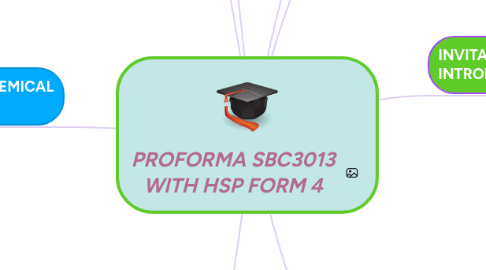
1. Learning Activities (HSP FORM 4)
1.1. Work in small group to match cellular component to their function
1.2. present comparison between the structure of an animal cell and plant cell
2. carry out small group discussion
3. describe cell organisation such as formation of tissues, organs, system in multicellular organisms
4. LEVEL OF ORGANIZATION = INTRODUCTION TO BIOLOGY (UNDERSTANDING CELL ORGANIZATION)
4.1. Learning Outcome (HSP FORM 4)
4.1.1. describe cell specialization in multicellular orgnisms
4.2. Learning Outcome (PROFORMA)
4.2.1. appreciate the role of scientific methods in the accumulation and discoveries of biological knowledge
4.2.2. able to explain the principles and function
4.2.3. able to compare the major cellular process
4.2.4. observe the living processes of unicellular organisms - feeding, locomotion and reproduction through video
4.3. Learning Activities (HSP FORM 4)
4.3.1. carry out small group discussion and presentation
4.3.2. construct models of tissues, organs and systems
5. MOLECULES OF LIFE = CHEMICAL COMPOSITION OF CELL
5.1. Learning Outcome (HSP FORM 4)
5.1.1. Lipid
5.1.1.1. understand element and type of lipid
5.1.1.2. identify the component and breakdown of fat and oil
5.1.1.3. able to compare saturated and unsaturated lipid
5.1.2. protein
5.1.2.1. understand element and structure of protein
5.1.2.2. understand formation and breakdown of dipeptide and polypeptide
5.1.2.3. able to identify essential and non essential amino acid
5.1.3. Carbohydrate
5.1.3.1. state the element and types
5.1.3.2. identify the formation and breakdown of disaccharide and polysaccharide
5.2. Learning Outcome (PROFORMA)
5.2.1. able to explain the principles and function moleculesof life
5.2.2. able to compare the molecules of life
5.2.3. appreciate the role of scientific methods in the accumulation and discoveries of molecules of life knowledge
5.3. Learning Activities (HSP FORM 4)
5.3.1. understand the necessity for cell specialization in multicellular organism as compared to unicellular organism.
5.3.2. carry out small group discussion and presentation - C,H,N,O,P,S,Ca,Fe
6. INTRODUCTION OF PHOTOSYNTHESIS = NUTRITION
6.1. Learning Outcome (HSP FORM 4)
6.1.1. state the substance required and produced for photosynthesis
6.1.2. state adaptation to optimise photosynthesis
6.1.3. identify factors affecting the rate of photosynthesis
6.1.4. state the equation process
6.2. able to explain the principles of photosynthesis process and function of photosynthesis process and recognize the relationship between them
6.3. Learning Outcome (PROFORMA)
6.3.1. able to compare the major photosynthesis process
6.3.2. appreciate the role of scientific methods in the accumulation and discoveries of photosynthesis knowledge
6.4. Learning Activities (HSP FORM 4)
6.4.1. read about discovery photosynthesis
6.4.2. study a cross-sectional model of a leaf (draw and label)
6.4.3. having a discussion about part of a leaf
7. INVITATION TO BIOLOGY = INTRODUCTION TO BIOLOGY
7.1. Learning Outcome (HSP FORM 4)
7.1.1. understand the importance of biology
7.1.2. able to understand what is biology
7.1.3. identify different field in biology
7.1.4. understand the careers related to biology
7.1.5. identify various way of studying biology
7.2. Learning outcome (PROFORMA)
7.2.1. able to explain the principles of structure and function of organisms
7.2.2. able to compare the major cellular process
7.2.3. able to work in teams to apply the scientific process, including conducting experiment.
7.3. Learning Activities (HSP FORM 4)
7.3.1. construct concept map about different fields of study and careers related to biology
8. CELL STRUCTURE AND FUNCTION = CELL STRUCTURE AND ORGANIZATION
8.1. Learning Outcome (HSP FORM 4)
8.1.1. able to draw and label an animal and plant
8.1.2. able to relate the function of organel
8.1.3. able to identify cellular component
8.2. Learning outcome (PROFORMA)
8.2.1. able to compare the major cellular process
8.2.2. able to explain the principles of structure and function of cell and recognize the relationship between them at all level
8.2.3. able to work in teams to apply the scientific process and conducting experiment.
8.2.4. appreciate the role of scientific methods in the accumulation and discoveries of biological knowledge
